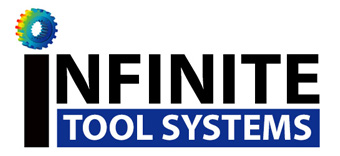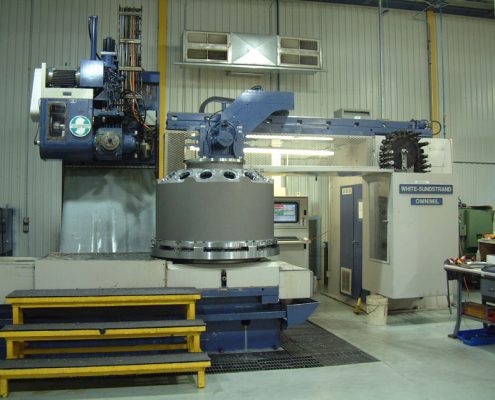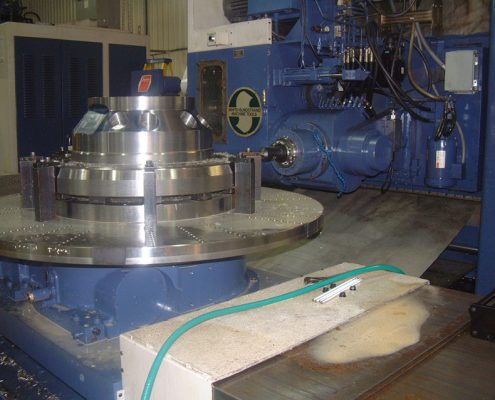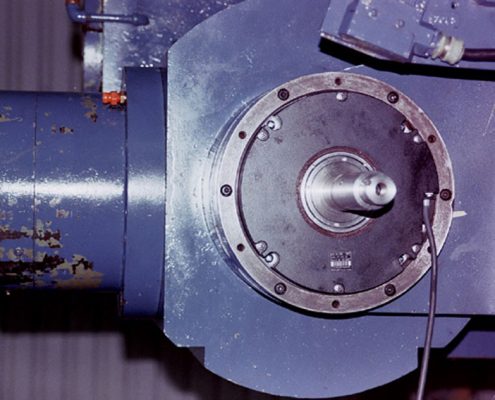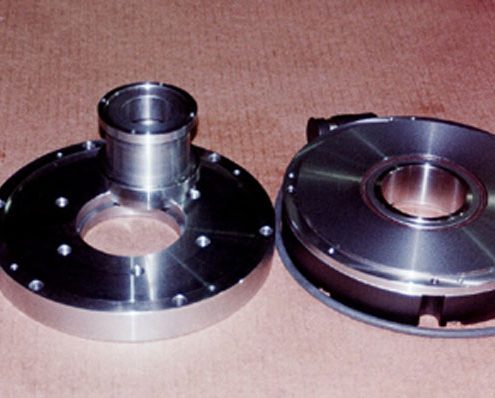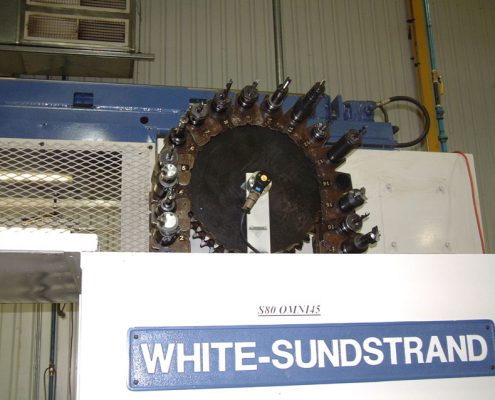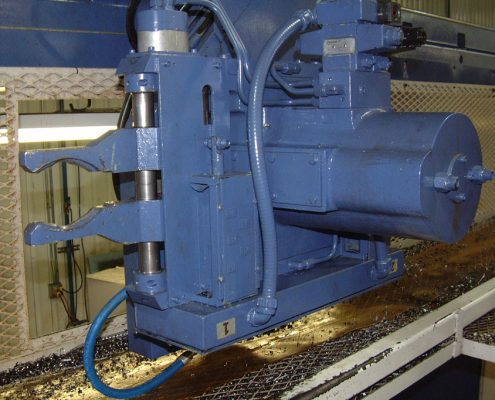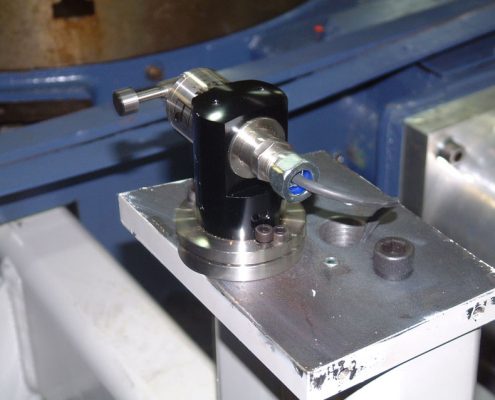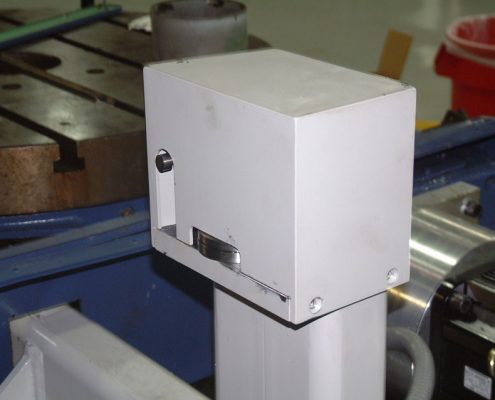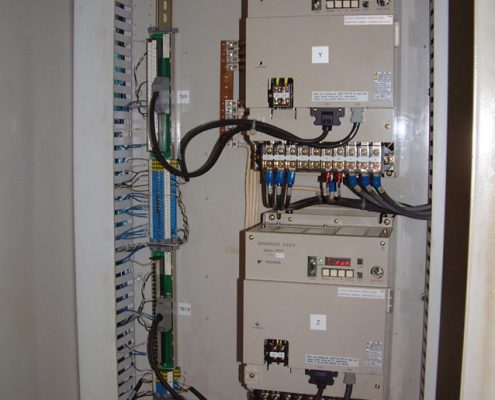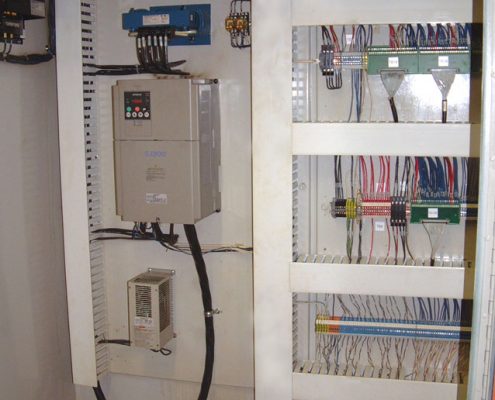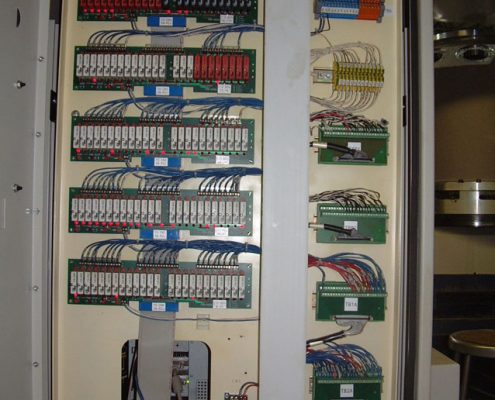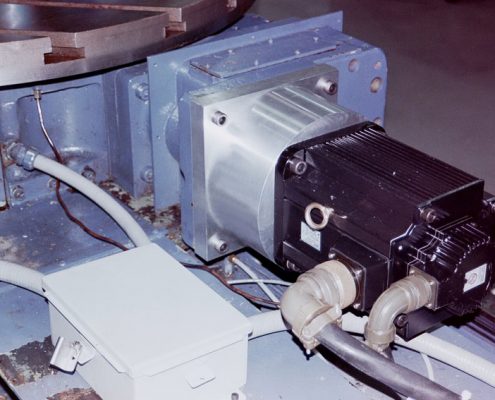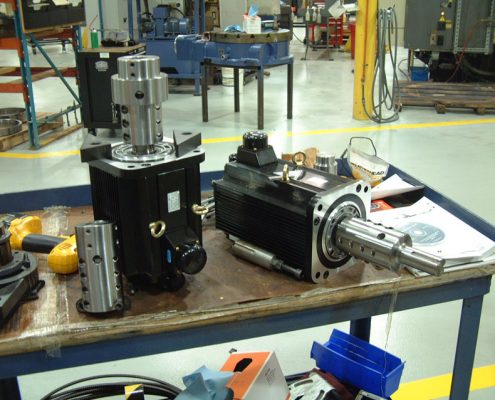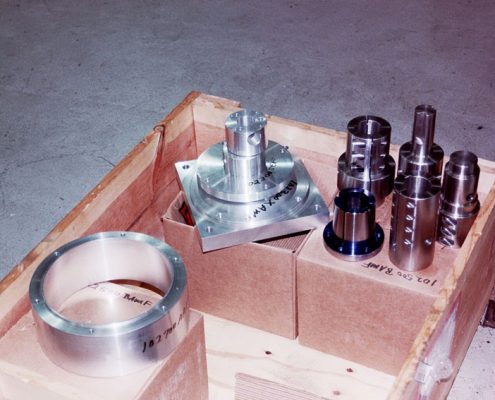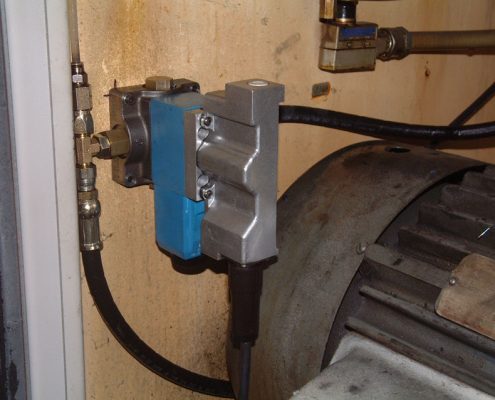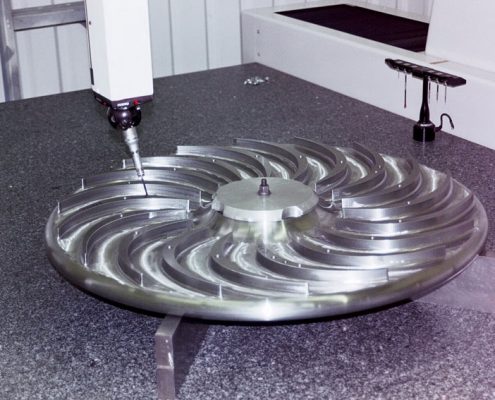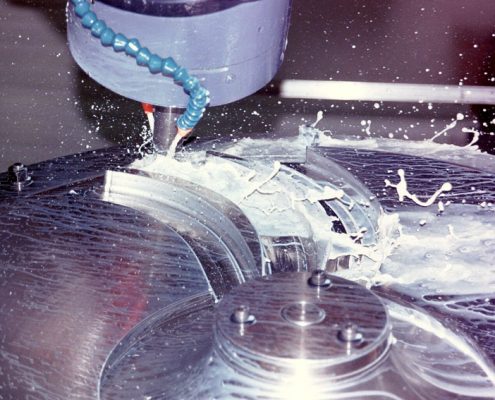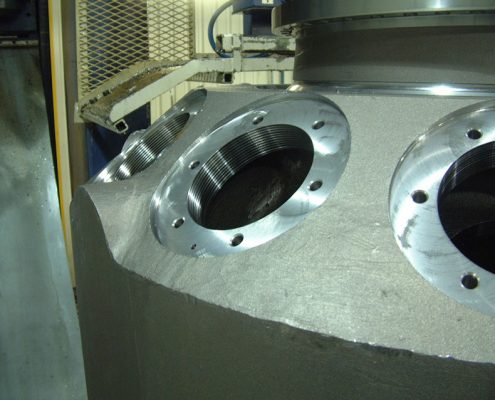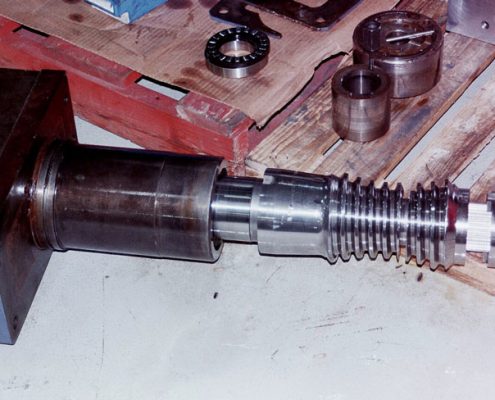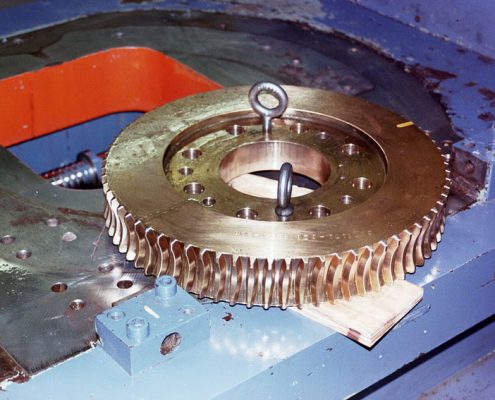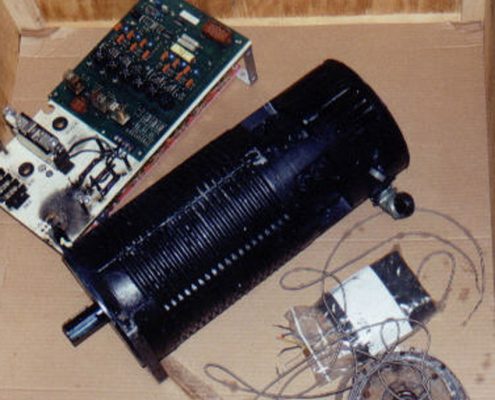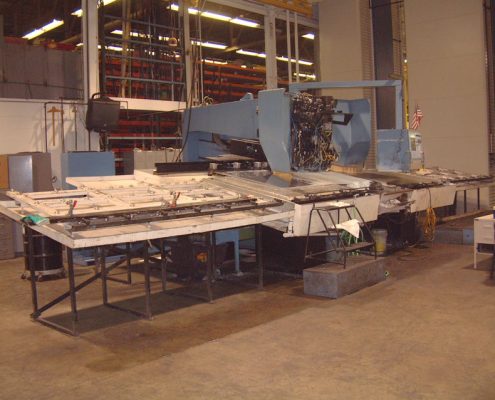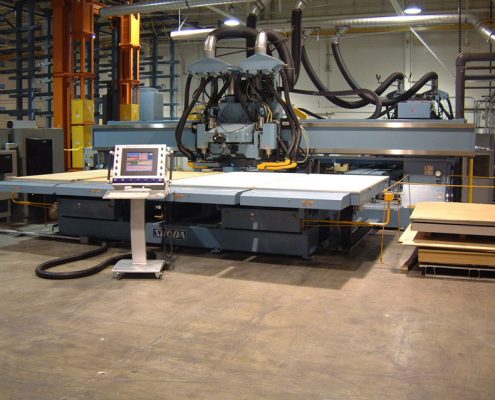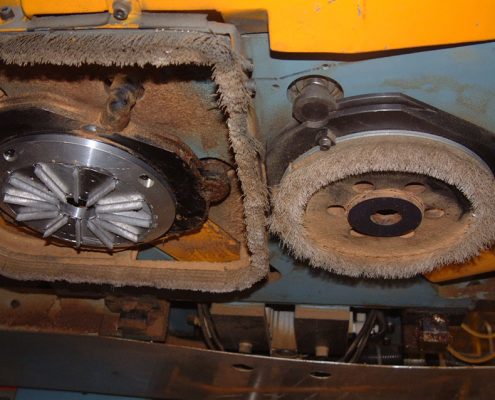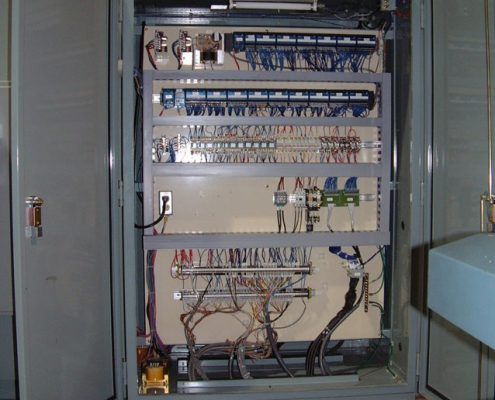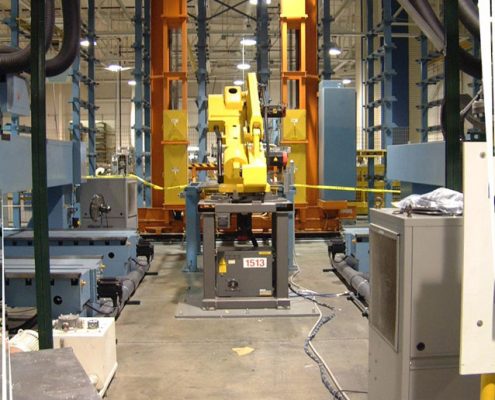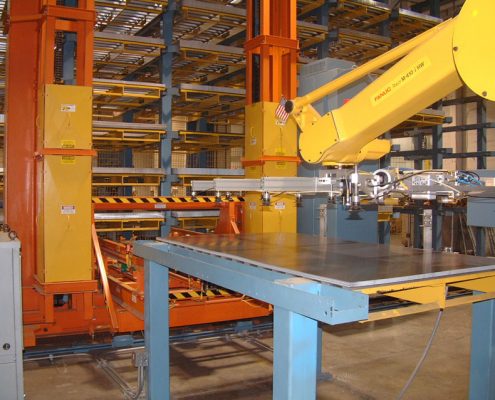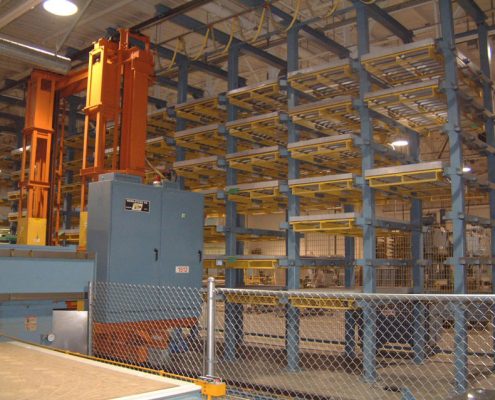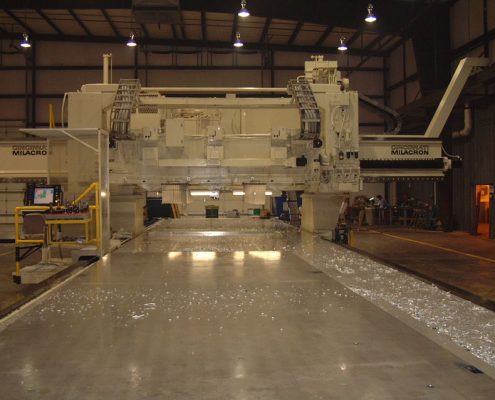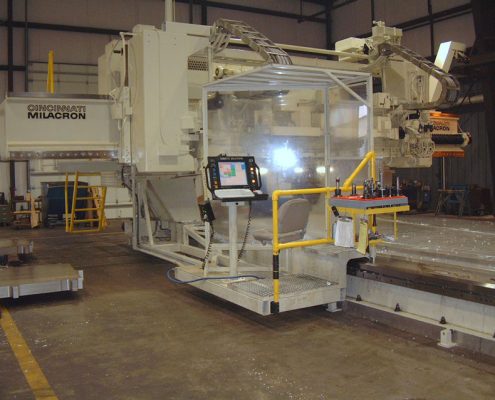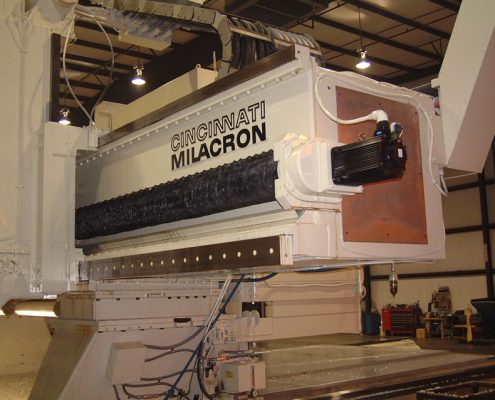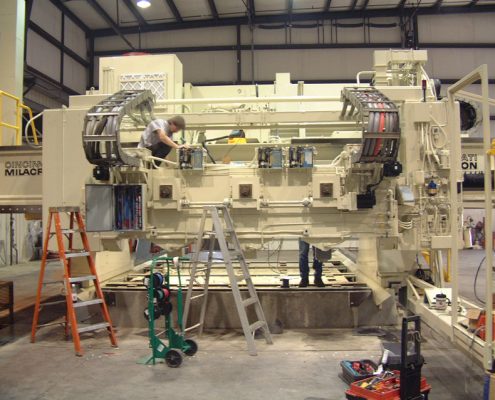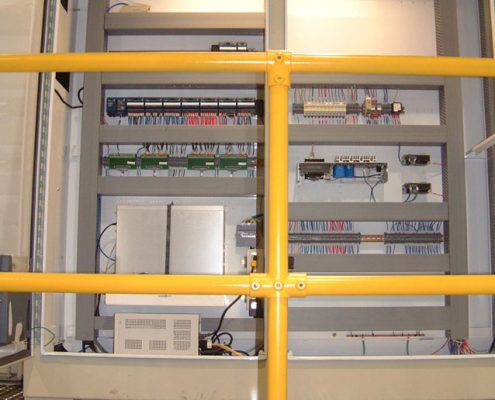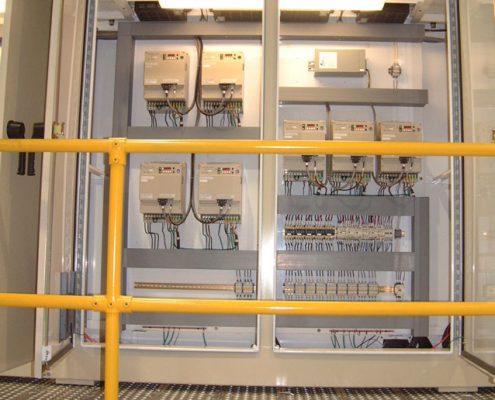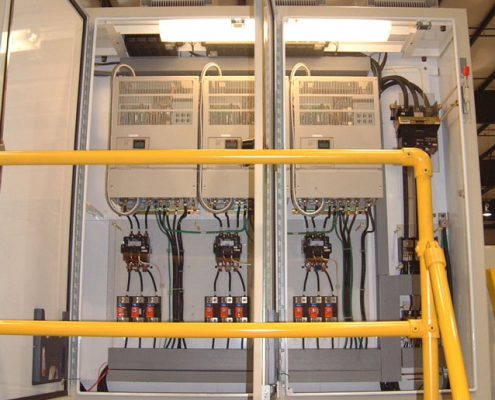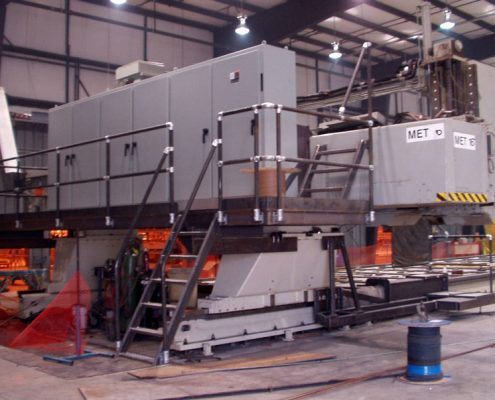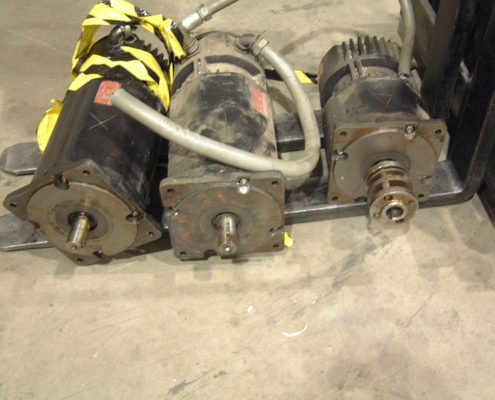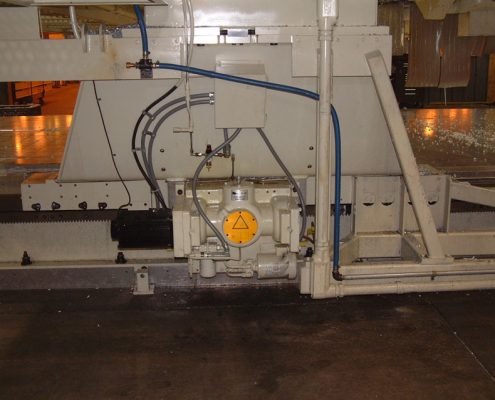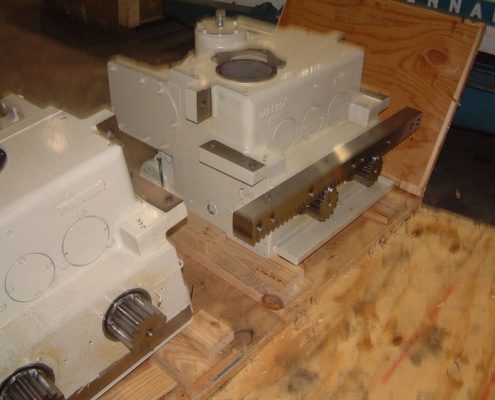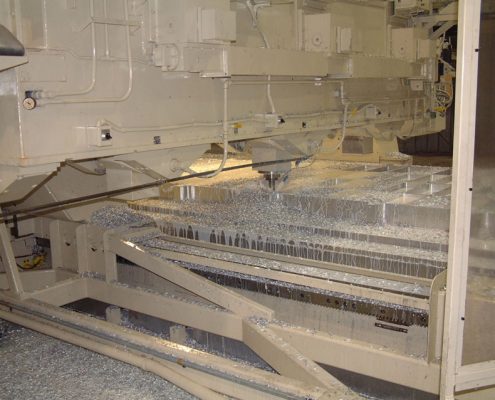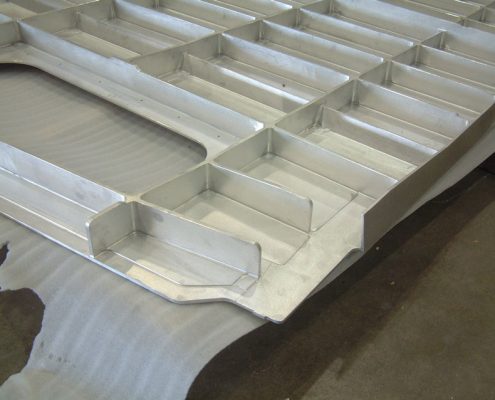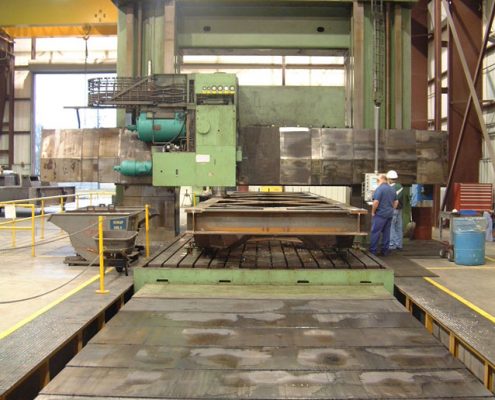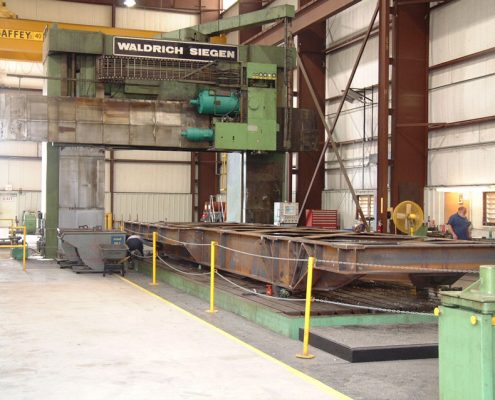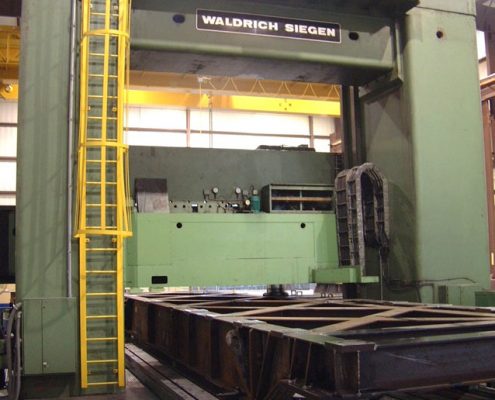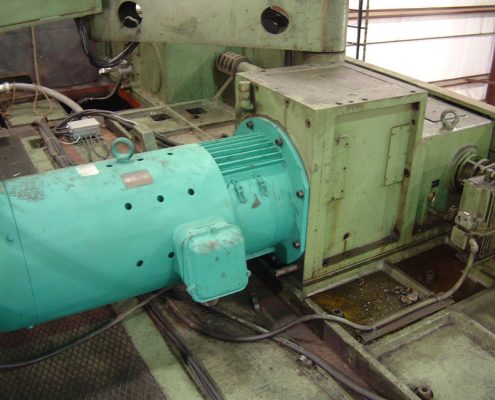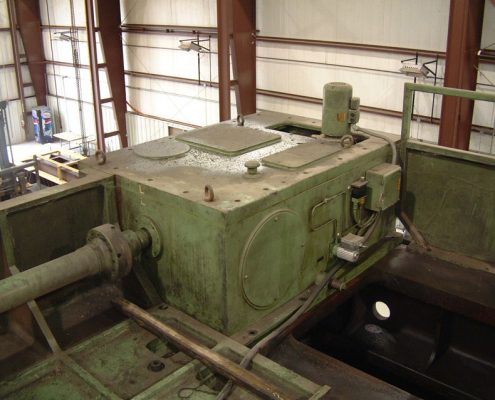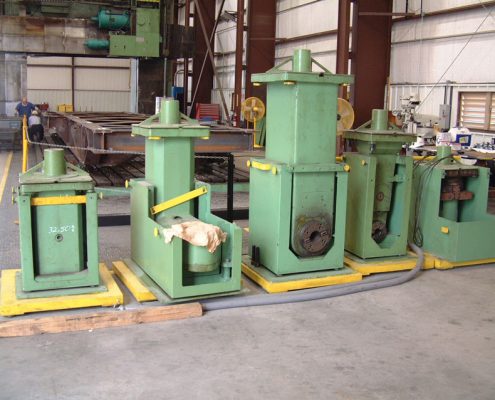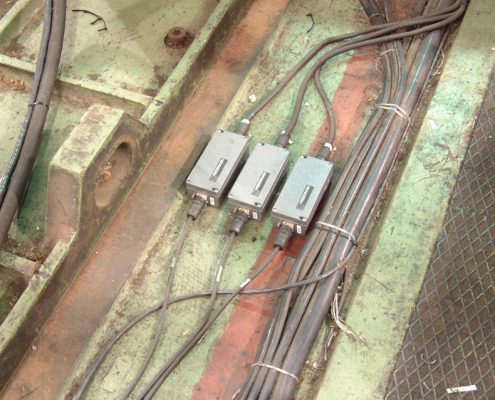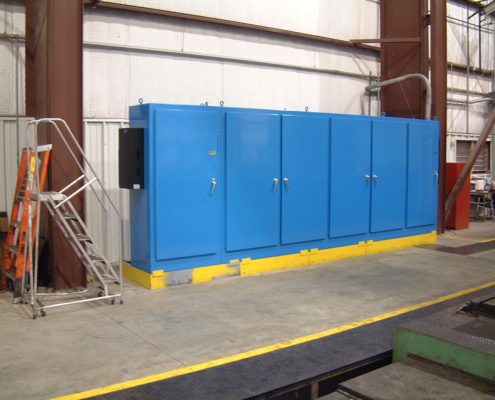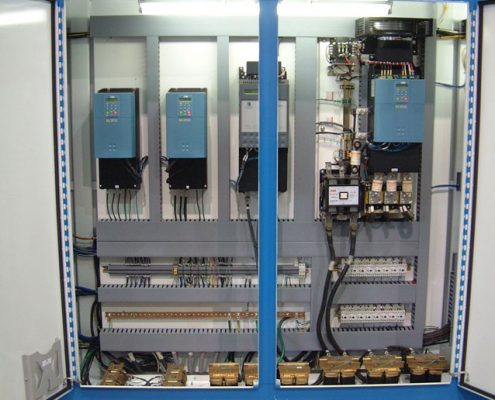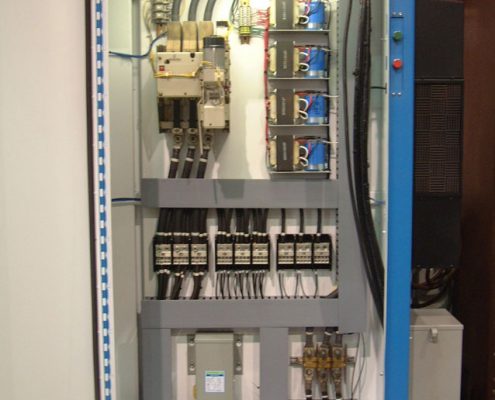While we no longer do retrofits, they are an important part of our history. Retrofitting provided a wealth of experience on what parts of the various machine designs worked well, and in some cases, what parts needed to be improved.
We began doing CNC control retrofits on machine tools in 1997. A typical retrofit candidate was a large, expensive to replace machine, in good mechanical condition but with an obsolete CNC control. Retrofitting was a cost effective alternative to purchasing a new machine. Some of the components we commonly replaced included servo motors and drives, angular and linear feedback systems, hydraulic proportional valves, solenoids, transformers, power supplies, and of course digital and analog inputs and outputs.
Once the hardware upgrades were made, the next task was to get everything working again. We developed PLC programs to enable automatic part program execution, automatic tool changes, spindle gear changes, tool orientation, part shuttles and pallet changers, and lube systems. We did start-up and servo tuning, provided new electrical schematics and documentation, and trained operators. Over a period of about 7 years we completed dozens of successful retrofits, many of them on large, complex machines.
Sundstrand 5 axis Omnimils
We did two S80’s and one S60 for one customer. These were the largest 5 axis mills they had and were critical to their operation, but unfortunately the old controllers were not very reliable. These machines had the potential to be extremely accurate; after the retrofits we achieved rotary axis accuracy in the 2-5 arc second range.
These machines certainly had their challenges, including springy 485:1 rotary axis gearboxes, hydrostatic spindle bearings that had to be supplied with varying pressures depending on the RPM, a poorly designed tool changer, and cumbersome spindle gear changes and tool orient to name a few. However, upon completion of the first S80 the customer was pleased and proceeded to have us retrofit their other S80, and also a slightly smaller S60 with a pallet changer.
Trumpf and Shoda Stack Routers
Our first stack router retrofits were 3- Trumpf BFZ 3000’s. These machines riveted the stack to an aluminum sacrifice sheet, drilled and routed the parts, and then drilled out the rivets to release the parts. These were mission critical machines for a large aerospace manufacturer and operated around the clock to handle the large volume of parts. The customer had been outsourcing many of their parts since the machines were so unreliable and couldn’t keep up.
The customer chose to retrofit all three machines, but since production was so critical we retrofitted them one at a time, leaving two in production. We replaced the original controllers, servo motors and drives, along with hydraulic proportional pressure valves for squeezing the rivets. The retrofitted machines were so much more reliable the customer was able to bring all of their flat pattern parts back in-house.
Later this customer installed a new stack router cell with 2- Shoda NCW double spindle, double table routers, an ASRS (Automated Storage and Retrieval System) and a Fanuc robot for material handling. The routers were new, but the customer was so pleased with the controls we had put on the Trumpfs that they had us install the same controls on the Shodas. This was a better system, but it still had some issues, a few of which are have noted in the photos. A few years later we got the opportunity to design and build a complete stack routing system for another customer from the ground up and we corrected all of those issues.
Cincinnati Milacron 5 Axis Contour Profilers
This customer purchased two large used Cincinnati Profilers and used a local contractor to assemble and mechanically rebuilt them on-site. We had done numerous retrofits on several smaller machines for this customer so they chose us to retrofit these as well. We did the wiring and built the electrical panels, designed the electrical system and did all the control programming and integration.
These machines had triple 100 HP 10,000 RPM spindles and were capable of removing large amounts of material from thick aluminum billets very quickly. The operator rode on a platform that moved with the gantry since the X axis travel was over 80 ft.
Waldrich Siegen Planer Mill
This was the largest machine we had ever worked on. Theoretically, a part up to 43′ long x 17′ wide x 11′ tall could be machined on it! The table rode on hydrostatic bearings, and, according to the customer, had a capacity of 500 tons. Originally the machine could only be operated manually according to digital readouts. We converted it to full CNC so the customer could run automatic part programs.
The customer did not want to spend the money to replace the original variable speed DC axis drives with servo drives, so axis gain had to be set very low and following error was high when compared to a servo driven machine. It did have Heidenhain linear scales, however, so it positioned accurately for point to point moves, which is all the customer needed. They used it to machine and drill steel frames for large portable generators. The typical milling cutter was 20″ diameter and we saw them drill with 3″-4″ diameter twist drills.
We provided complete new electrical schematics, which was challenging since the original schematics were in German. We also provided PLC control logic and programming, startup, and operator training.
